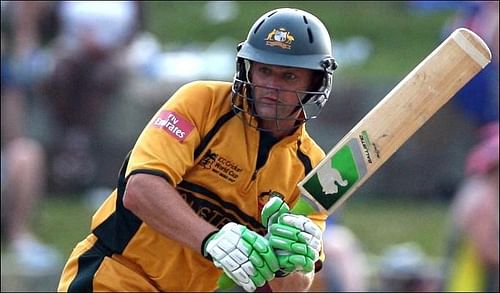
#NoMatterWhat - How Adam Gilchrist revolutionised ODI Cricket with his batting
This story is of the days gone by. This story is of the days when five-day cricket was ‘Cricket’ in broader sense. The story is of the transition era. Since its inception in 1971, ODI Cricket was only regarded as the shortened-version of Test Cricket.
It was cricket, yes, but only Test cricket shortened to 60 overs, and later to 50. The approach, however, was the same - the way Test Cricket was played. You see off the new ball, especially the red ball (given that there was only the red ball earlier) try to score in singles and doubles, with the bad ball being hit for a boundary.
It was conventional, defensive, and to say the least, a little in the shadows of Test cricket. Scores were minimal, run-rates were subdued, and the three sessions of Test cricket were played in three equal phases.
Soon, the game started to become a little more modern. The emergence of Sachin Tendulkar saw him set an example for teams to be a little more aggressive while batting. Sanath Jayasuriya and Romesh Kaluwitharana stunned the world with their attacking brand of opening the innings during the 1996 World Cup.
However, the sport in general was still looking for a major upgrade. What were the possibilities? What about getting runs as is done in Tests, in a limited span of a few overs? What about hitting sixes off good balls? What about getting a hundred in half as many deliveries?
However, what Adam Gilchrist did was rejuvenate ODI Cricket thanks to his interpretation of how the match should be played. The only manner in which he knew to bat was full of aggression, and that is how he was as a player.
He took the fight to the opponent each and every time and worked very hard to ensure he was a difference-maker for his team. His swashbuckling approach to batting allowed the others to take their time, get themselves set after which they could decide how to go about scoring. By that time, Gilchrist’s knock would already have put the opponents on the back-foot.
The memories are countless, the innings are several, but to give a glimpse of what the man had, it would suffice to fast forward to 2007, his penultimate year in International cricket. It was a T20 game against India, in India. RP Singh to Adam Gilchrist- 4,4,4,W. These were the first three balls of the match. He was clean bowled on the fourth ball of the game, but it was those first three balls that mattered.
Gilchrist was a phenomenon in his own right. The end result didn’t really matter, neither did the average. Every time Australia batted, the opposition knew that there was a storm coming. Every time Australia batted, the opposition knew that he would nick the first ball, or play a brisk cameo, or just destroy them eventually.
The fear first-up was what mattered. The opposition was already on the back-foot before the first ball had been bowled. He revolutionized the opening spot for batsmen to come.
Seeing off the new ball was a joke now. All batsmen knew now, was to hit the ball, and not worry about the consequences. The numbers 3, 4 and 5 were called middle order batsmen for a reason.
Openers didn’t have to fill that role. Openers were meant to hit. Gilchrist was meant to hit. He never cared about the pressure of the match situation.
Once asked about his approach to batting while chasing a target in excess of 300, he answered in simple terms. He said that you’ve just got to play the next ball. You don’t have think what the target is or what the run-rate is. What has to happen will happen, you’ve just got to play the game.
Perhaps the most brilliant one-day innings that he played - against Sri Lanka in the World Cup final of 2007- was a befitting example of his approach. Australia had been unassailable throughout the tournament, but this was the final.
Ask their nemesis, England, and they would tell you what it feels to lose in a World Cup final. But Gilchrist wasn’t bothered. That he hadn’t scored in the tournament didn’t matter either. He just played the next ball, the ball after, and the ball after.
The rain-curtailed match, was decided in the first half itself, when Gilchrist smashed 149 off 104, with 13 fours and 8 sixes. Ponting had done something similar to India in the last World Cup final, and that game too was decided in the first half.
He remembered his mistakes, but never made the mistake of letting it affect him. He just went out there and hit the ball. You bowl short to him with the new ball and he would pull you handsomely through the leg-side. You bowl on his pads, and he would nonchalantly hit you for a six. You overpitch, and you would be driven, a fraction wider, and you would be cut.
Playing Adam Gilchirst was like weathering a storm, one that you knew was coming to destroy you. Very few other batsmen can boast of such a status.
With Matthew Hayden, he built up one of the most destructive opening pairs in the history of ODI Cricket. The man finished with 9619 ODI runs at a strike-rate of 96.94. Strike-rate, yes, because that’s what mattered for Gilchrist.
He made 16 hundreds and 55 fifties whilst keeping wickets for Australia. He doesn’t count anywhere amongst the most prolific batsmen who boast more runs, better averages, and more hundreds, but the thrill that he brought to the field can be matched by only a few.
